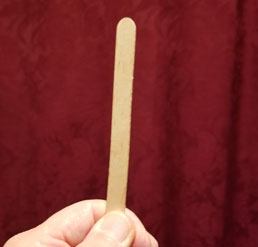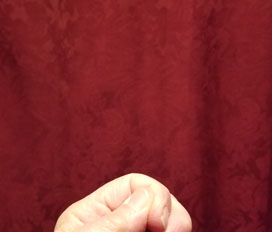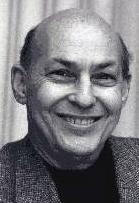
Professor Minsky had a B.A. in mathematics from Harvard (1950), and a Ph.D. in mathematics from Princeton (1954). Everyone in the lab called him Marvin. When I worked with Minsky in the late sixties, he had moved from mathematics into engineering, becoming a professor in the Electrical Engineering Department. I can attest to the fact that he had developed a comprehensive understanding of the field of electrical engineering, something brought home to me somewhat painfully during my doctoral qualifying exam.
I believe I heard the following story from Minsky himself, but it was so long ago that I can't be certain. It allegedly happened at some computer conference or other, where Minsky and McCarthy were sitting together in the audience. Coffee always flows freely at these conferences, and of course coffee stirrers are generally made available. In the sixties, these were almost always made of wood, as opposed to the plastic stirrers one tends to see these days. Perhaps the speaker was somewhat boring, but in any event, Minsky started fooling around with a pile of coffee stirrers that he found on the table in front of him. He began weaving them together on the table, as shown in the picture below:  Of course, if you were to grab one of the stirrers from that structure and pick it up, the whole thing would fall apart into a loose pile of sticks. It would not hang together. But when Minsky completed the weave with six stirrers, he became able to pick up the entire structure while holding it by only one of the sticks, as shown in the picture below. He referred to this as a "stable structure", defined as one that can hold itself together without falling apart:  Of course, Minsky's incisive mind couldn't stop there. Was it possible to build a stable structure with a smaller number of stirrers? After playing around a bit, he came up with a stable structure that required only four stirrers:  Minsky contemplated this for a while. I'm sure his mind must have turned to generating a mathematical proof that it was not possible to make a stable structure with three or fewer stirrers. Actually, such a proof is rather simple, since to hold together, each stirrer must be pinned between at least three others - two clearly won't do it. Perhaps the proof came to his mind first, and the structure second. In any event, he then turned to McCarthy, held up his creation, and said, "I think the smallest stable structure one can make out of these stirrers requires four of them, and this is it." However, McCarthy disagreed. "Marvin," he said, "you've been spending far too much time at MIT among engineers. You used to be a fine mathematician, but now you seem to have turned into an engineer." Picking up a single stirrer from the table, McCarthy held it up, and said, "The smallest stable structure one can make requires only one stirrer, and this is it."  Minsky was not to be outdone. He replied, "John, if you want to take a mathematical point of view, I think you're the one who has turned into an engineer. Speaking as a mathematician, the smallest stable structure one can make requires zero of them." Holding up his empty fingers as shown below, he added, " ... and this is it."  Mathematical minds at work. John McCarthy died in 2011, and Marvin Minsky died in 2016. The end of an era.
  |
 I received my doctorate in electrical engineering in June, 1970. My thesis advisor was the legendary Marvin Minsky, shown to the left, a pioneer in the field of artificial intelligence.
I received my doctorate in electrical engineering in June, 1970. My thesis advisor was the legendary Marvin Minsky, shown to the left, a pioneer in the field of artificial intelligence.
 I never met John McCarthy (seen to the right), who left MIT for Stanford University in 1962. It was actually McCarthy who coined the term "Artificial Intelligence". In 1958, Minsky and McCarthy started what is now known as the MIT Computer Science and Artificial Intelligence Laboratory. They remained friends and kept in touch throughout their respective careers.
I never met John McCarthy (seen to the right), who left MIT for Stanford University in 1962. It was actually McCarthy who coined the term "Artificial Intelligence". In 1958, Minsky and McCarthy started what is now known as the MIT Computer Science and Artificial Intelligence Laboratory. They remained friends and kept in touch throughout their respective careers.